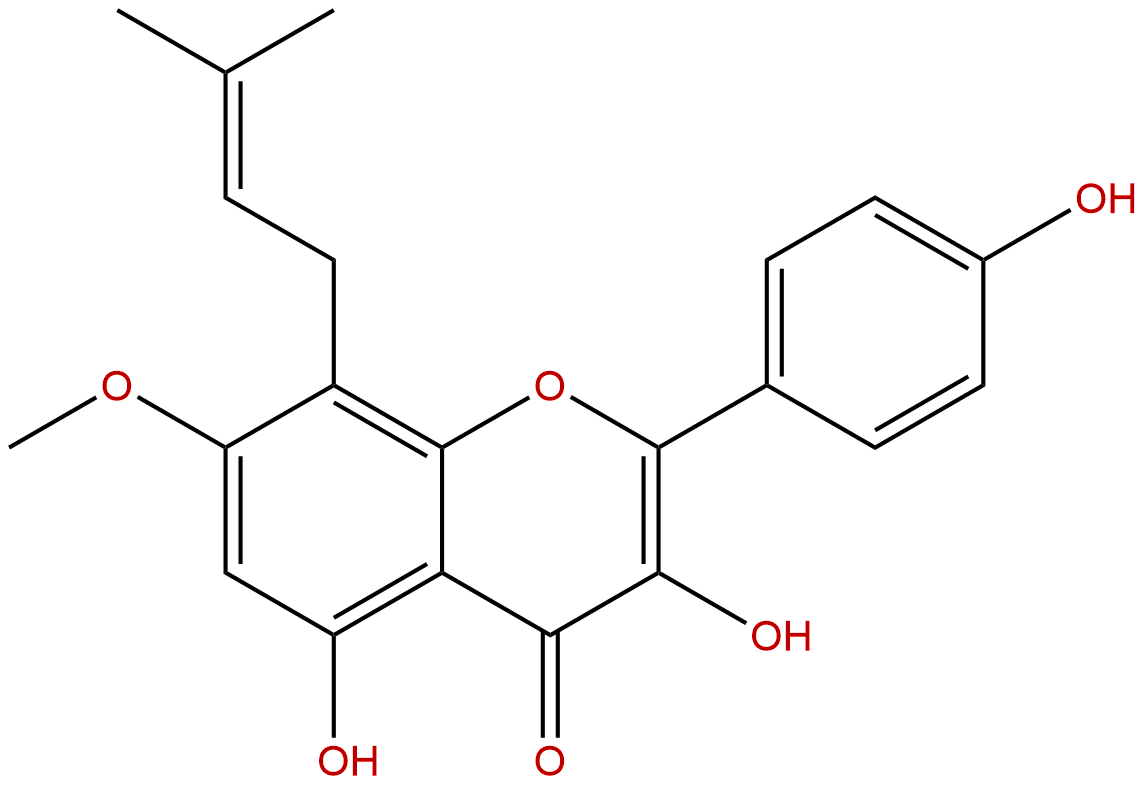
IsoicaritinCAS No.:28610-30-2
|
||||||||||
 |
|
|
||||||||

| Catalogue No.: | BP0772 |
| Formula: | C21H20O6 |
| Mol Weight: | 368.385 |
Product name: Isoicaritin
Synonym name: Isoanhydroicaritin; 3,4′,5-Trihydroxy-7-methoxy-8-prenylflavone; 4′,5-Dihydroxy-7-methoxy-8-prenylflavonol
Catalogue No.: BP0772
Cas No.: 28610-30-2
Formula: C21H20O6
Mol Weight: 368.385
Botanical Source: Epimedii folium
Physical Description:
Type of Compound: Flavonoids
Purity: 95%~99%
Analysis Method: HPLC-DAD or/and HPLC-ELSD
Identification Method: Mass, NMR
Packing: Brown vial or HDPE plastic bottle
Storage: Store in a well closed container, protected from air and light. Put into refrigerate or freeze for long term storage.
The product could be supplied from milligrams to grams
Inquire for bulk scale.
Description:
Isoanhydroicaritin is a natural product from Epimedium brevicornu Maxim.
References:
Chinese Pharmaceutical Journal, 2016 , 51 (24) :2169-2174
Isolation of antibacterial activity constituents of total flavonoids from sophora flavescens and simultaneous determination of seven flavonoids by HPLC
To study the chemical constituents of the total flavonoids from Sophora flavescens and establish a method for simultaneous determination of seven compounds.
METHODS AND RESULTS:
The compounds were isolated by chromatography on silica gel and ODS column and their structures were elucidated by spectroscopic analysis. The samples were analyzed on a Dikma C18 column (4.6 mm × 250 mm, 5 μm) ; gradient elution was performed using mobile phase composed of methanol (A) and water (B); the detection was carried out using a photodiode array detector at 280 nm. Seven compounds were isolated and their structures were identified as kuratidine (1), sophoraflavanone G (2), kurarinone (3), Isoanhydroicaritin (4), isoxanthohumol (5), formononetin (6), and trifolirhizin (7). The calibration curve was linear within 8.70-87.00, 44.25-442.50, 128.10-1 281.00, 9.40-94.00, 48.40-484.00, 14.20-142.00, and 25.70-257.00 μg·mL⁻1 for kuraridine, sophoraflavanone G, kurarinone, Isoanhydroicaritin, isoxanthohumol, formononetin, and trifolirhizin, respectively (r > 0.999 0), and the extraction recoveries varied from 95% to 105%.
CONCLUSIONS:
The main chemical components contributing to antibacterial activity of total flavonoids may be sophoraflavanone G, kurarinone, and isoxanthohumol. The method is simple, rapid, accurate, and can be used simultaneously to determine the contents of the seven active ingredients.
HPLC of Isoicaritin
